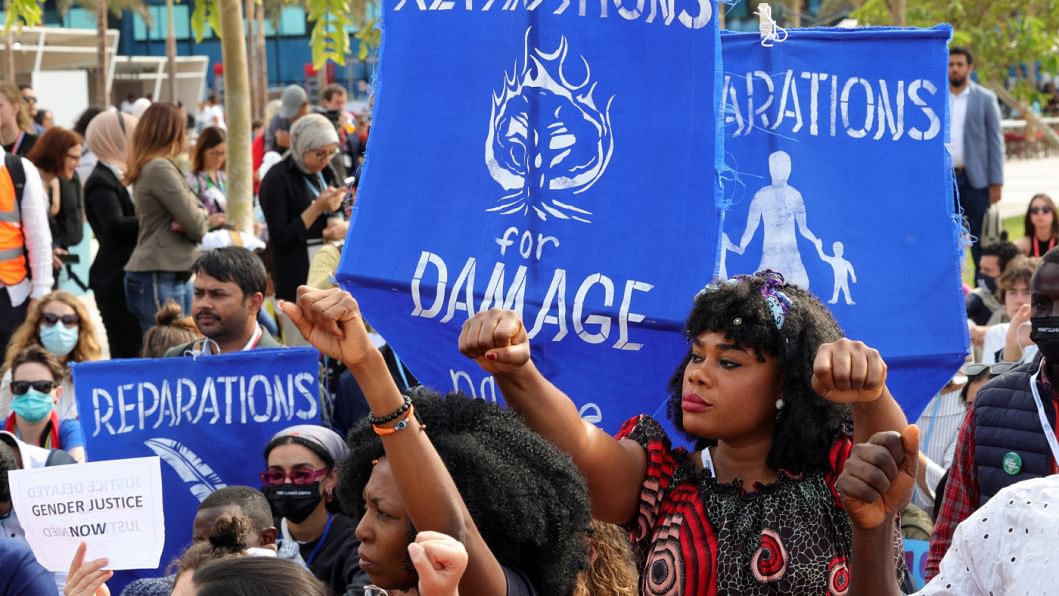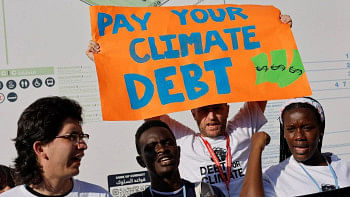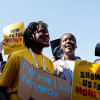The story behind the loss and damage fund at COP27

COP27 ended a day overtime on November 20 in Sharm El-Sheikh, Egypt with the historic achievement of a new fund for addressing loss and damage in vulnerable developing countries. Today, I want to tell the story of how this was achieved.
The demand for rich countries to shoulder their responsibility for historic pollution – which has raised the global temperature above one degree Celsius and is now causing damages around the world, particularly in the poorest developing countries – is over 30 years old.
The most vulnerable developing countries are organised into four subgroups under the broader group of all 134 developing countries, called the Group of 77 and China (G77). The four subgroups are the Alliance of Small Island States (AOSIS), who have always been the most vocal on this issue as they face an existential threat from sea level rise, the Least Developed Countries (LDC), which includes Bangladesh, the Africa Group, and finally the AILAC group of Latin American countries in Central and South America.
These four subgroups bring together over 100 countries, and hence constitute a simple majority amongst the 194 countries in the United Nations Framework Convention on Climate Change (UNFCCC). They also constitute over two-thirds of the G77. However, they are all relatively poor and small countries whose voices seldom count, even within G77, unless they can present a united front.
This story begins a few COPs ago, when the LDC group, with support from the International Centre for Climate Change and Development (ICCCAD) at the Independent University, Bangladesh (IUB), began to organise pre-COP planning workshops with loss and damage negotiators from the other three subgroups to try to present a common demand to the G77 first. The G77 then supported these demands and put forward two demands in COP25, which was held in Madrid, Spain in November 2019.
The demands were to create a technical body for carrying out research and providing technical support on loss and damage, and for the creation of a fund through which the rich polluting countries will pay compensation to poorer developing countries suffering from human-induced climate change. Clearly, the latter was the more politically sensitive demand.
At COP25, the developed countries eventually agreed to set up the Santiago Network for Loss and Damage, but they refused to agree to the fund.
Then, at COP26 in November 2021 (two years after COP25, because of the Covid-19 pandemic) the G77 again raised the demand for the establishment of the Glasgow Facility for Finance for Loss and Damage. While this was in the draft Glasgow Climate Pact text until the last day, the then COP president went overtime by another day (as now seems to be normal practice). The negotiators arrived to find they were given a take-it-or-leave-it Glasgow Climate Pact in which the wording had been changed to the establishment of the Glasgow Dialogue on Finance for Loss and Damage, and that too would run for three years. In other words, a last-minute change replaced a finance facility with more talks without any substantial outcome. Even then, US Climate Envoy John Kerry claimed this was a major concession on their part.

Needless to say, this was extremely disappointing for the most vulnerable developing countries. So, we went back to the drawing board and came up with a proposal to include finance for loss and damage as a sub-agenda under the Finance agenda of COP27, instead of the separate loss and damage agenda.
This proposal was provisionally accepted by the incoming Egyptian Presidency, but in order to be adopted it needed support from all countries, since COP decisions are made by consensus. We knew that some of the developed countries would try to block this, so we started to lobby with friendly developed countries like Denmark, Germany and Ireland to persuade others, particularly the US, from not blocking the agenda.
As expected, there were intense negotiations behind the scenes even before the official beginning of COP27. In the end, the US only agreed with the caveat that it would not be used for liability or compensation. This was the first win for vulnerable developing countries and G77, to get finance for loss and damage in the COP agenda for the very first time, after many years of trying unsuccessfully.
Then the difficult negotiations began. The G77 was ably led by Sherry Rehman, Minister of Climate Change of Pakistan, who spoke passionately on behalf of both the people of Pakistan who had suffered devastating floods with losses and damages estimated at USD 30 billion, and all the people from vulnerable developing countries. This unity of the G77 at COP27 was an important factor in persuading the developed countries.
The outstanding work done towards achieving the loss and damage by LDC Group Chair Madeleine Diouf from Senegal and Saber Hossain Choudhury from Bangladesh, ministerial level spokesperson from the LDC Group, should also be mentioned here.
It is important to note that this is just the beginning and much work still needs to be done on the modalities of the fund, who will pay into it, how much will be paid, who will manage it and finally, who will be eligible to receive funds once they are available. These questions will be addressed by a transitional committee at COP28 in November 2023, when we hope the new fund can become operational.
Finally, it should be noted that Nicola Sturgeon, First Minister of Scotland, is also an important part of this story, since she was the first leader to offer GBP two million towards loss and damage explicitly at COP26 last year, and she challenged other leaders to do the same. This was followed up by the government of the Belgian province of Wallonia offering one million euros, and a number of foundations giving several million dollars as well.
Before COP27, Denmark also offered 100 million kroners, and the G7 under German leadership set up the Global Shield to address loss and damage from human-induced climate change. During COP27, other countries including Austria, New Zealand and Belgium all offered varying amounts of funding to address loss and damage. However, while these offers of funding outside the UNFCCC are most welcome, they are not a substitute for a collective fund under the auspices of the UNFCCC where all countries have a say.
COP27 has ushered in a new era of shared acknowledgement of responsibility for human-induced climate change. I believe it would not be wrong to rename it as COP1, due to this historic commitment.
Dr Saleemul Huq is director of the International Centre for Climate Change and Development Independent University, Bangladesh.

 For all latest news, follow The Daily Star's Google News channel.
For all latest news, follow The Daily Star's Google News channel. 






Comments